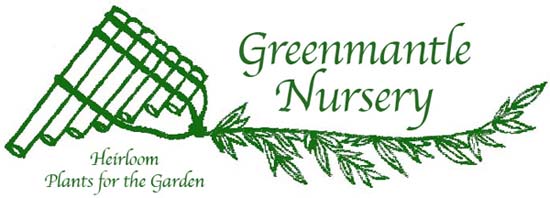
| Our Fruit Collection | ||
| Our Rose Collection | ||
Greenmantle Nursery
3010 Ettersburg Road
Garberville CA 95542
(707) 986-7504
 |
Greenmantle Nursery |
|||||||||
CHERRIES Our apologies: Due to their inconsistent success rate, we no longer offer cherry benchgrafts. We are leaving this page for reference information only. |
|||||||||||
|
Here we have another heavenly Prunus fruit that eludes and frustrates many growers. The first battle is getting the young trees to survive and thrive. Next come the vagaries of weather and pollination. And finally, just when the crop seems bountiful, the flocks of birds arrive.
Greenmantle Nursery cannot guarantee success with cherries. But we have had the pleasure of eating our own cherry crops most years, and we have witnessed many stolid old specimens still bearing well despite decades of bacterial canker. Cherries have a very poor tolerance for standing water - so make sure your soil is as light and well-drained as possible. And don't neglect to protect them from gophers where this is a concern; cherry roots will attract any gophers in the neighborhood. RootstocksAfter experimenting with some modern dwarfing rootstocks, we are back to grafting all our stock on mazzard seedling. This makes a vigorous standard tree requiring 18-20 foot spacing - except when grafted to "genetic dwarf" varieties. Mazzard generally handles our wet winters better than Mahaleb, which is somewhat susceptible to phytophthera.
SWEET CHERRY VARIETIES
Montmorency Cherries All the sweet cherry varieties require pollination, except for Stella and Compact Stella. Pie Cherries are self-fertile. As their names imply, Compact Stella and Compact Lambert are "genetic dwarfs" - thanks to gamma radiation of the original genetic material - and only grow to about 12 feet tall. Meteor and North Star are also "genetic dwarf" varieties.
|
Roses: Master List * * * * * * * * * * * * * |
||||||||||
|
All original text and images © Greenmantle Nursery 2005 -2020 |
|||||||||||